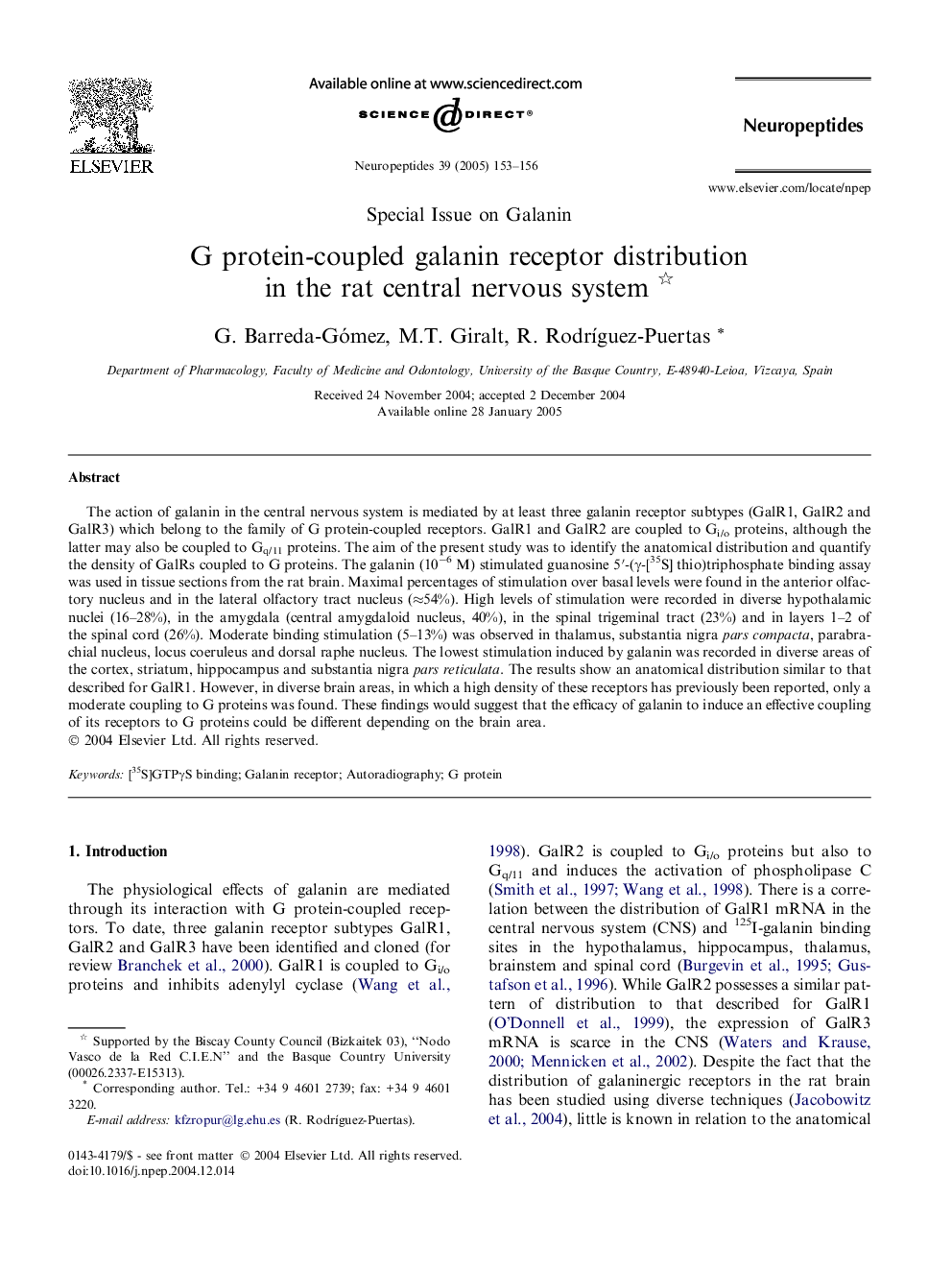| Article ID | Journal | Published Year | Pages | File Type |
|---|---|---|---|---|
| 9118785 | Neuropeptides | 2005 | 4 Pages |
Abstract
The action of galanin in the central nervous system is mediated by at least three galanin receptor subtypes (GalR1, GalR2 and GalR3) which belong to the family of G protein-coupled receptors. GalR1 and GalR2 are coupled to Gi/o proteins, although the latter may also be coupled to Gq/11 proteins. The aim of the present study was to identify the anatomical distribution and quantify the density of GalRs coupled to G proteins. The galanin (10â6 M) stimulated guanosine 5â²-(γ-[35S] thio)triphosphate binding assay was used in tissue sections from the rat brain. Maximal percentages of stimulation over basal levels were found in the anterior olfactory nucleus and in the lateral olfactory tract nucleus (â54%). High levels of stimulation were recorded in diverse hypothalamic nuclei (16-28%), in the amygdala (central amygdaloid nucleus, 40%), in the spinal trigeminal tract (23%) and in layers 1-2 of the spinal cord (26%). Moderate binding stimulation (5-13%) was observed in thalamus, substantia nigra pars compacta, parabrachial nucleus, locus coeruleus and dorsal raphe nucleus. The lowest stimulation induced by galanin was recorded in diverse areas of the cortex, striatum, hippocampus and substantia nigra pars reticulata. The results show an anatomical distribution similar to that described for GalR1. However, in diverse brain areas, in which a high density of these receptors has previously been reported, only a moderate coupling to G proteins was found. These findings would suggest that the efficacy of galanin to induce an effective coupling of its receptors to G proteins could be different depending on the brain area.
Related Topics
Life Sciences
Biochemistry, Genetics and Molecular Biology
Endocrinology
Authors
G. Barreda-Gómez, M.T. Giralt, R. RodrÃguez-Puertas,
